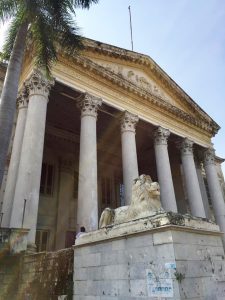Sightseeing in India Off the Beaten Path – The Grand Palaces of Nizam’s Hyderabad
Saved under Arts & Culture, Community, Current Stories, Travel
Tags: Baytown, Clear Lake, Cypress, Desi news, Greater Houston, Houston, Houston Desi news, India, Indian American community, Indian News, Indians in America, Indo-American News, Katy, NRI, pearland, south asia, South India, Sugar Land, Texas, USA
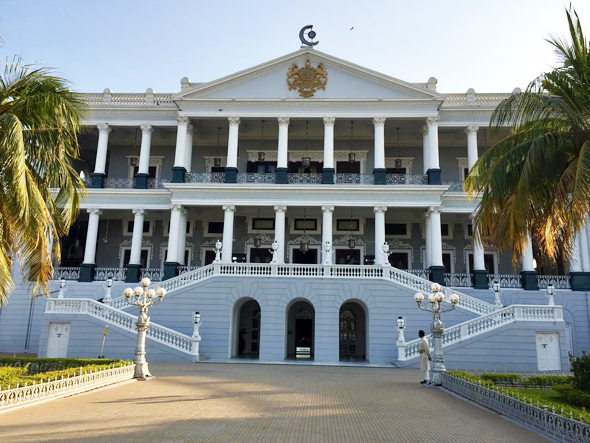
Falaknum Palace was built atop a hill by Nizam’s prime minister Nawab Vikar-ul-Umra from 1894-1890. Nizam was invited for a short stay, but never left. At 93,971 square feet on a 32-acre site, it is the largest palace in the world.
By Pramod Kulkarni
On the Road: This is the fifth episode describing my wife Jyoti and I’s visit to India during Dec.-Jan. 2016. After about two weeks in Gujarat and Pune, we flew to Hyderabad for four-day visit.
I grew up in Hyderabad from essentially my birth to the age of 16 in 1967 with a two-year gap (1961-63) when we lived in Salt Lake City, Utah. The topmost tourist attractions in Hyderabad are the Golkonda fort outside the city and Charminar, a monument and mosque, in the old portion of Hyderabad.
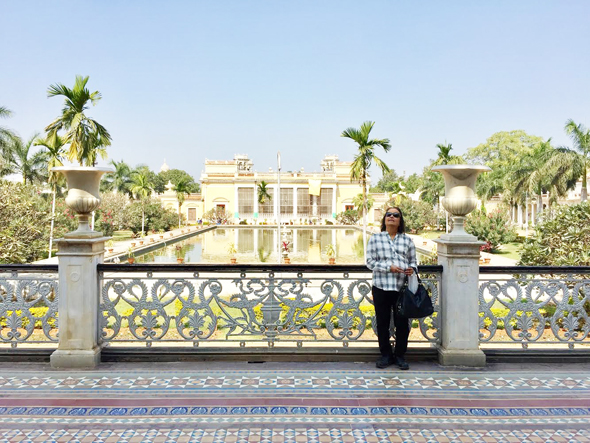
Located in old Hyderabad Char Minar, the Chowmahalla Palace consists of several mahals and courtyards. Its construction was started by Salabat Jung in 1750 and completed by Asaf Jah V between 1857 and 1869.
As a youngster, I made numerous school field trips and family treks to both of these sites, that were built by the Qutub Shahi kingdom, which ruled the region from 1512 until 1638, when Mughal emperor Aurangzeb conquered the fort.
As the Mughal empire withered, Viceroy Mir Qamar-ud-Din Siddiqi declared independence in 1713 to form the Asaf Jah dynasty, which came to be known as Nizamshahi. Seven Nizams ruled Hyderabad, until the police action of 1947 to bring Nizam’s dominions into independent India. The last Nizam, Barkat Ali Khan Mukarram Jah, lives in Australia.
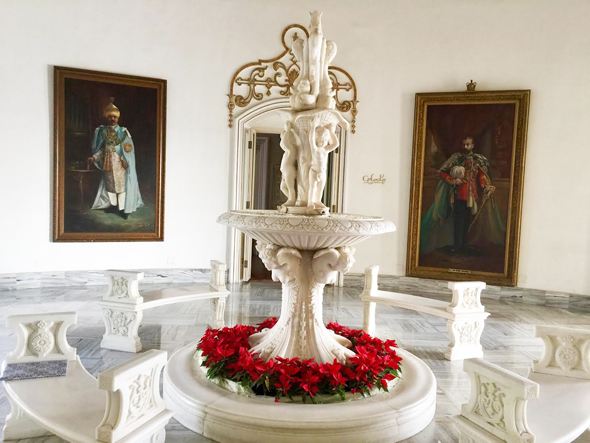
The interior of what is now Taj Falaknuma Palace. The palace was built of white Italian marble and there are majestic portraits of the various Nizams.
This time, we decided to visit two of Nizam’s palaces, which have been recently restored and opened to the public: Chowmahalla and Falaknuma.
Chowmahalla (Four Mahals) was the official residence of the Nizams. The palace includes a darbar, with innumerable chandeliers and Takht-e-Nishan, a high marble throne. All of the accession ceremonies took place there. These days, the palace is available for weddings and business receptions. The UNESCO Asia-Pacific Merit award for cultural heritage conservation was presented to Princess Esra Jah, wife of the eighth Nizam, at Chowmahalla Palace in 2010.
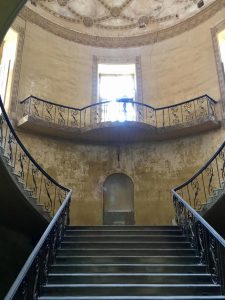
The opulent British Residency for Nizam’s dominions was built William Kirkpatrick, the first resident between 1798-1805. It is being restored with assistance of the World Monuments Fund.
As a youngster, I used to see the Falaknuma Palace on top of a rocky hill at a distance from the flat rooftop of our house in the suburbs. Princess Esra also restored Falaknuma after it went into disrepair in 1950s. It was given to the Taj Group of Hotels, for a 100-year lease, to reopen as a luxury hotel in 2010.
The third palace we visited was the British residency, built by the first resident, James Achilles Kirkpatrick from 1798-1805, adjacent to Musa River. Kirkpatrick was married to young Khair un Nissa. Their romatic story is recounted by William Dalrymple in his novel, White Mughals. The residency was given to Women’s College of Hyderabad. The palace, and its magnificent straircase, are now being restored by the State Department of Archaeology with the support of the World Monuments Fund.
The next episode of this travelogue will describe the journey to the historical city of Kolhapur and the coastal Konkan, Maharashtra.

